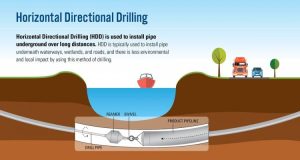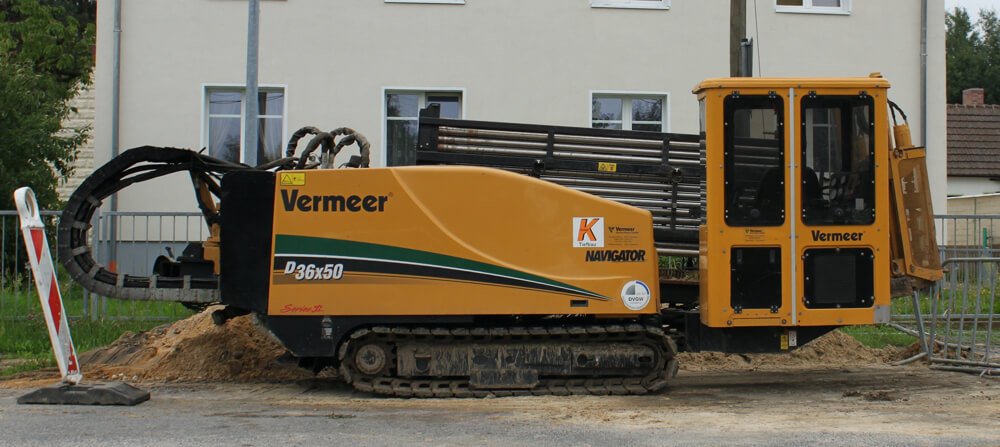Where is Directional Drilling Used?
Directional drilling, a specialized drilling technique, has revolutionized various industries by allowing drilling operations to be conducted in non-vertical directions. This innovative method offers enhanced access to hard-to-reach reserves and opens up new possibilities for resource extraction and infrastructure development. Let’s delve into the diverse applications of drilling.
1. Oil and Gas Industry
One of the most prominent applications of directional drilling is in the oil and gas industry. Traditional vertical drilling has its limitations, but directional drilling enables companies to tap into oil and gas reserves that are located in challenging or inaccessible locations.
By using advanced guidance systems and specialized drilling equipment, oil and gas companies can drill horizontally or at specific angles. This technique allows them to reach reserves located under densely populated areas, bodies of water, or ecologically sensitive regions, minimizing surface disruption and environmental impact.
2. Geothermal Energy Production
Drilling plays a crucial role in geothermal energy production. Geothermal wells often need to be drilled in areas with high heat gradients, which might not coincide with a convenient vertical drilling path. Directional drilling enables engineers to navigate the wellbore through complex geological formations to access optimal heat sources.
By accessing deeper and hotter geothermal reservoirs through directional drilling, the efficiency and sustainability of geothermal energy production are significantly improved. This technology expands the reach of geothermal projects and enhances their viability as a clean energy source. https://drillitco.com.au/directional-drilling-gold-coast/

3. Underground Infrastructure
Installing underground utilities and infrastructure, such as pipelines, telecommunications cables, and sewer lines, can be challenging in urban areas with limited space and numerous obstacles. Drilling provides a solution by allowing these utilities to be laid beneath existing structures without causing major disruptions.
With drilling, contractors can create precise pathways for utilities without the need for extensive excavation. This reduces the impact on roadways, reduces traffic congestion, and minimizes disturbance to residents and businesses in the area.
3.1 Environmental Remediation
Directional drilling also finds applications in environmental remediation projects. When dealing with contaminated soil or groundwater, drilling directly to the affected area can be more effective than traditional excavation methods. Directional drilling enables targeted placement of remediation agents, facilitating efficient cleanup while minimizing disturbance to the surrounding environment.
4. Mining Industry
Mining companies utilize directional drilling to access mineral deposits located in challenging terrains or in proximity to sensitive areas. By drilling at specific angles, miners can extract resources without disturbing the surface extensively.
Additionally, drilling can be employed for exploration drilling, enabling miners to gather valuable geological data before committing to large-scale extraction operations. This helps reduce risks and optimize mining activities.
5. Scientific Research
Directional drilling has even made its way into scientific research. In fields like earth sciences and seismology, researchers use drilling to access deep Earth layers for data collection and experimentation.
By drilling at precise angles, scientists can gain insights into the Earth’s composition, seismic activity, and geological history. This information contributes to a better understanding of natural processes and informs various scientific disciplines.
5.1 Planetary Exploration
Furthermore, drilling technology has potential applications in future planetary exploration missions. By adapting this technique to extraterrestrial environments, researchers could obtain subsurface samples from celestial bodies like Mars, offering unprecedented insights into their geological composition and history.
Conclusion
Directional drilling has transformed multiple industries by enabling access to resources and locations that were previously out of reach. From the oil and gas sector to renewable energy production, infrastructure development, and scientific research, the applications of directional drilling continue to expand.
As technology advances and industries innovate, drilling is likely to play an increasingly pivotal role in optimizing resource utilization and minimizing environmental impact.
Whether it’s delving deep into the Earth’s subsurface or navigating complex urban landscapes, drilling stands as a testament to human ingenuity and our ability to adapt technology for the greater good.

